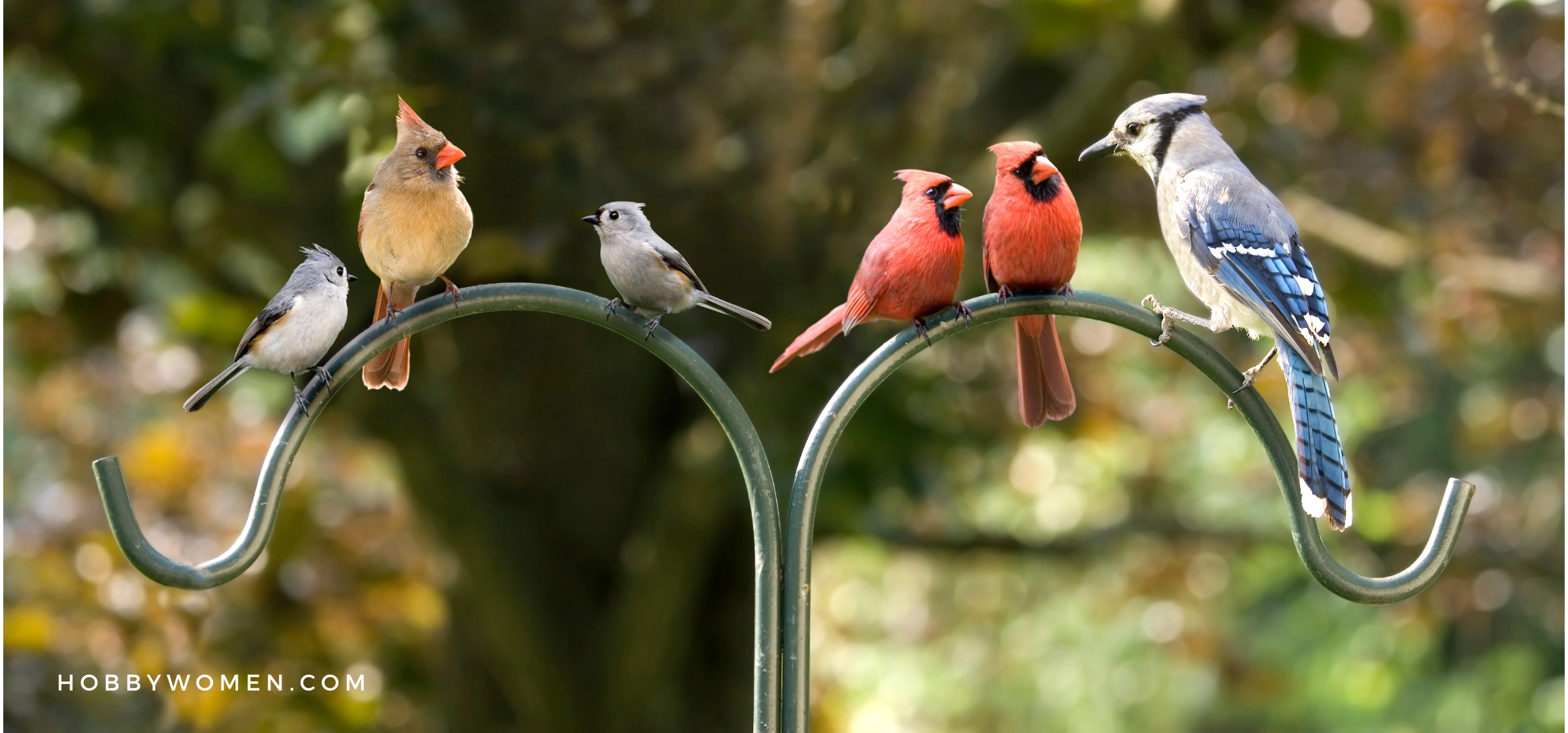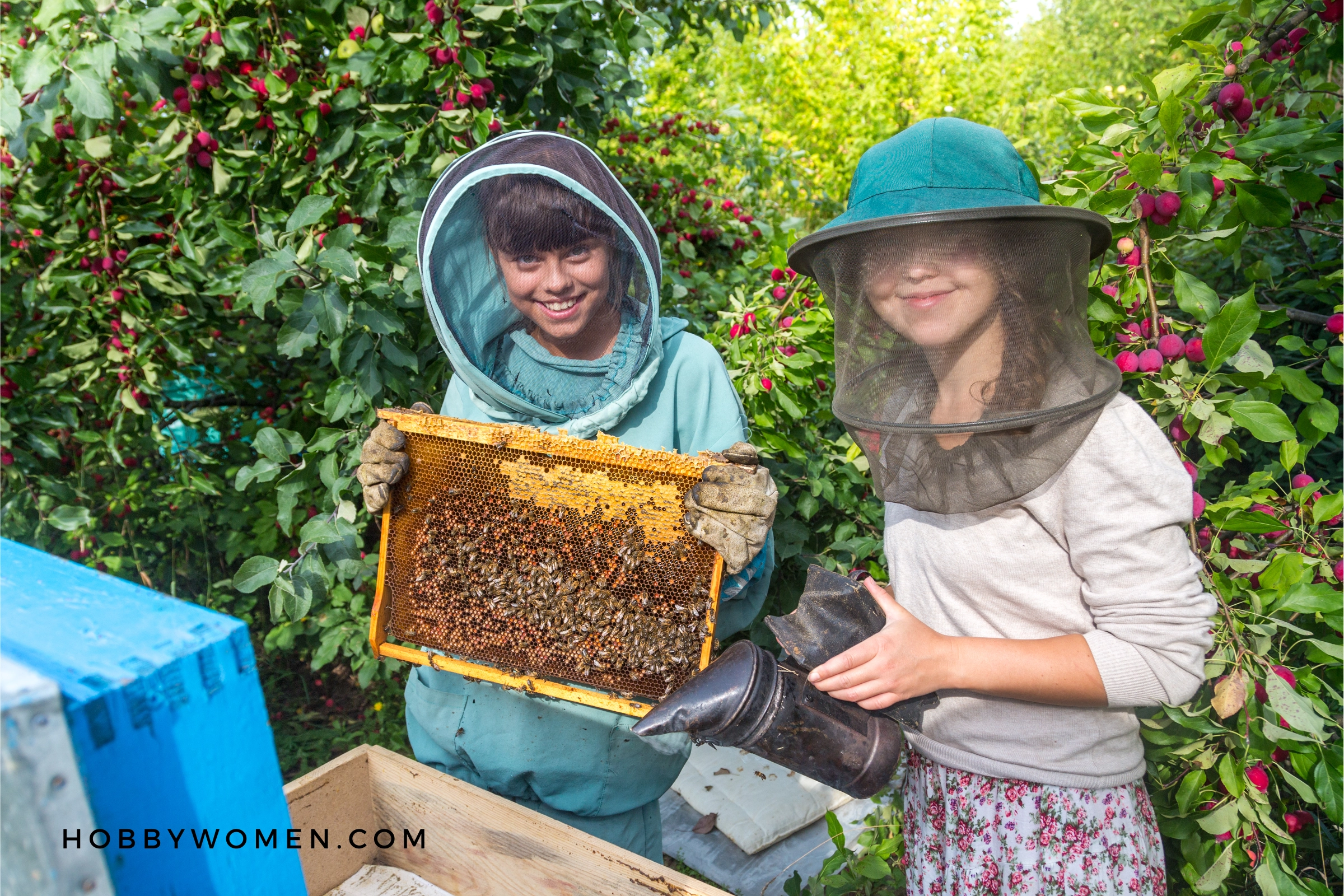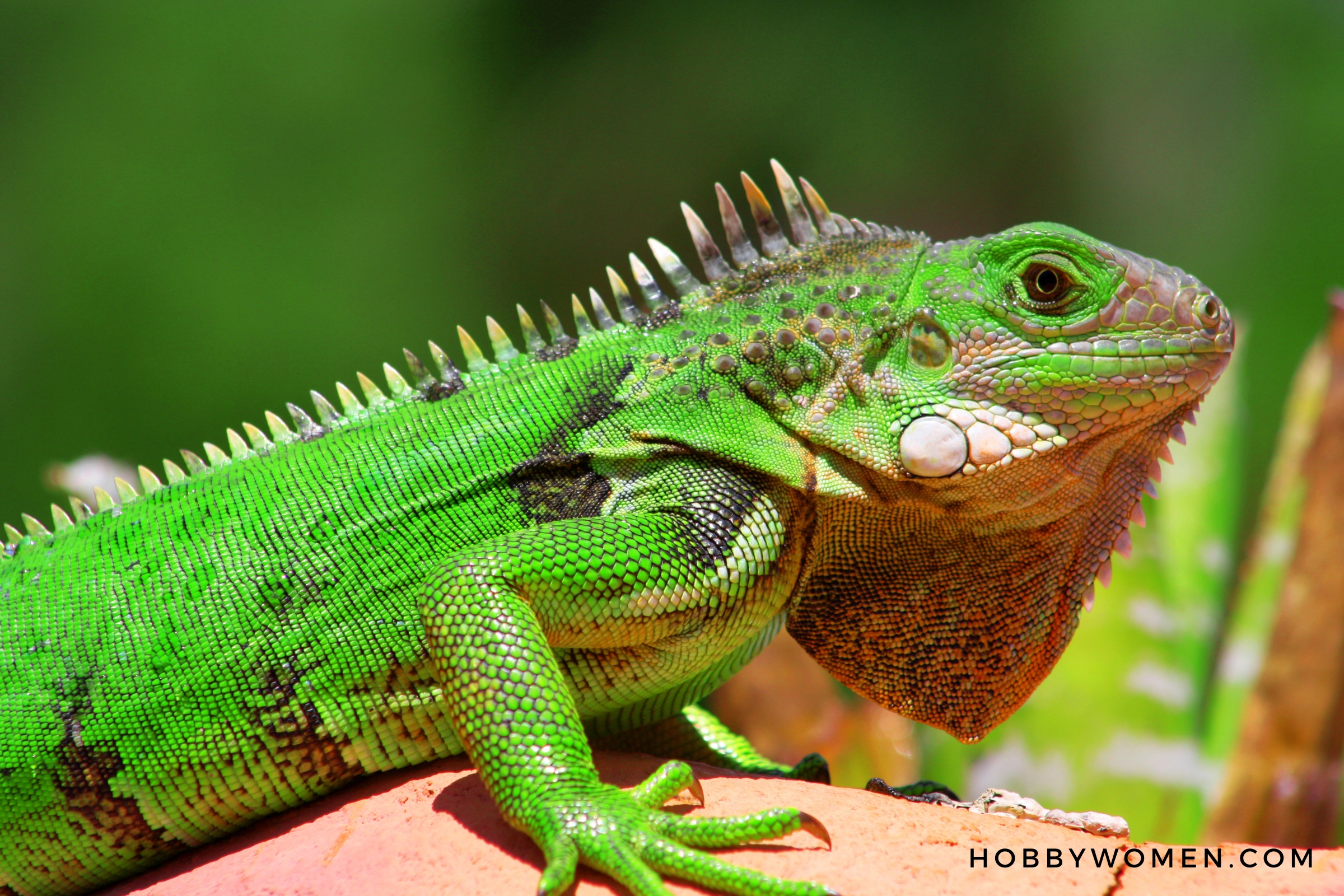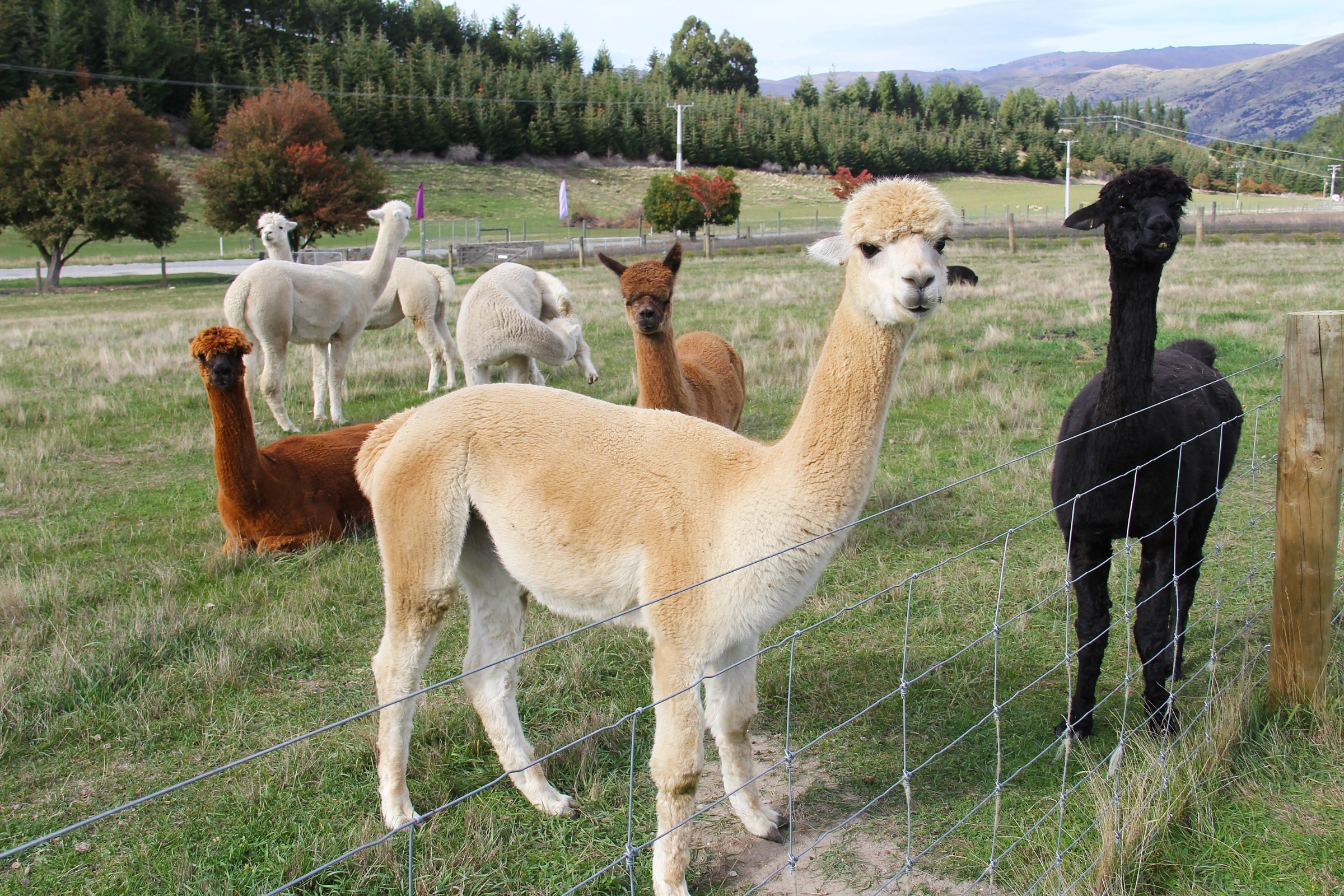This post may contain affiliate links or ads and we may earn a small commission when you click on the links at no additional cost to you. As an Amazon Affiliate, we earn from qualifying purchases. This is at no additional cost to you and helps with our website expenses.
Animal hobbies are a fantastic way to ignite your passion for the natural world, while also having a blast!
These exciting pastimes range from birdwatching and dog training to wildlife photography and horseback riding. There’s something for everyone, regardless of your interests and skill level.
Connecting with Nature with Animal Hobbies
Engaging in animal hobbies not only provides endless fun but also fosters a deeper understanding of the natural world around us.
As you immerse yourself in these activities, you’ll develop a stronger connection with our planet’s incredible creatures, leading to a greater appreciation for the environment and the importance of conservation efforts.
So, let’s dig into the amazing world of animal hobbies and find the perfect one for you!
Top 10 Animal Hobbies
From birdwatching to horseback riding, these animal hobbies are both fulfilling and entertaining.
Whether you’re a seasoned animal enthusiast or just starting out, these activities are a great way to connect with and learn more about the creatures that share our planet.
#1. Birdwatching: A Feathered Adventure Awaits
Benefits and Equipment
- Boosts your observational skills
- Enhances your appreciation for nature
- Provides relaxation and stress relief
Birdwatching is an incredible hobby that opens up a world of colorful, feathered friends! As you spot and identify different species, you’ll sharpen your observational skills and deepen your connection with nature.
Plus, it’s a fantastic way to relax and unwind. To get started, you’ll need a few essential items:
- Binoculars: For a close-up view of birds from a distance
- Field guide: To help identify various bird species
- Notebook and pen: To jot down your sightings
- Comfortable clothing and footwear: For exploring different habitats
Getting Started
Ready to embark on your birdwatching adventure? Follow these simple steps:
- Choose a location: Parks, nature reserves, or even your own backyard can be excellent birdwatching spots.
- Research local bird species: Learn about the common species in your area to help with identification.
- Pick a time: Early mornings and late afternoons are typically the best times for bird activity.
- Be patient: Remember, birdwatching is about enjoying the experience, so take your time and soak in the sights and sounds.
#2. Dog Training: Unleashing Your Pup’s Potential
Different Dog Sports and Activities
There’s a wide variety of dog sports and activities to explore, ensuring endless fun for you and your furry friend. Some popular options include:
- Agility: Navigate your dog through obstacle courses with speed and precision.
- Obedience competitions: Showcase your dog’s impeccable manners and training.
- Herding trials: Put your dog’s natural herding instincts to the test.
- Canine freestyle: Choreograph routines with your dog to music, combining tricks, dance, and obedience.
- Flyball: A fast-paced relay race where dogs retrieve balls over hurdles.
Tips for Successful Training
To get the most out of your dog training experience, keep these handy tips in mind:
- Start with basic commands: Teach your dog simple commands like “sit,” “stay,” and “come” before moving on to more complex tricks.
- Use positive reinforcement: Reward your dog with treats, praise, or play to encourage good behavior.
- Be consistent: Use the same cues and signals for each command, and practice regularly.
- Stay patient: Training takes time, so be prepared for setbacks and celebrate your dog’s progress along the way.
#3. Aquarium Keeping: Dive into an Underwater Wonderland
Freshwater vs. Saltwater Aquariums
When it comes to aquarium keeping, you have two primary choices: freshwater or saltwater. Here’s a quick comparison to help you decide which one is right for you:
Freshwater Aquariums:
- Easier and less expensive to maintain
- Wide variety of colorful and hardy fish species
- Ideal for beginners
Saltwater Aquariums:
- More challenging and costly to maintain
- Stunning variety of marine life, including fish, corals, and invertebrates
- Suitable for experienced hobbyists looking for a new challenge
Basic Requirements and Maintenance
Whether you choose a freshwater or saltwater aquarium, there are some basic requirements and maintenance tasks you’ll need to consider:
- Tank size: Choose an appropriate tank size based on the number and size of the fish you plan to keep. Bigger is generally better for a more stable environment.
- Filtration system: A high-quality filter is crucial for keeping the water clean and removing harmful toxins.
- Heating and lighting: Maintain the proper temperature and lighting conditions to create a comfortable environment for your aquatic pets.
- Water testing: Regularly test the water for pH, ammonia, nitrite, and nitrate levels to ensure optimal water quality.
- Cleaning: Clean the tank, filter, and decorations periodically to prevent algae buildup and maintain a healthy environment.
By following these guidelines and dedicating time to routine maintenance, you’ll be well on your way to creating a thriving aquatic ecosystem for your finned friends to enjoy.
#4. Horseback Riding: Saddle Up for a Galloping Good Time
Equestrian Disciplines and Activities
Horseback riding offers a range of disciplines and activities to suit different interests and skill levels. Some popular equestrian pursuits include:
- Dressage: A graceful and elegant sport that showcases a horse’s obedience, flexibility, and balance.
- Jumping: Test your horse’s athleticism and your own riding skills by navigating a course of jumps.
- Trail riding: Enjoy a leisurely ride through scenic landscapes, perfect for connecting with nature and bonding with your horse.
- Endurance riding: Challenge your horse’s stamina and your own navigational skills in long-distance races.
Finding a Riding School or Stable
If you’re ready to embark on your equestrian journey, finding the right riding school or stable is essential. Here are some tips to help you make an informed choice:
- Research local options: Look for riding schools or stables in your area with positive reviews and a good reputation.
- Visit in person: Tour the facility to assess the cleanliness, safety measures, and overall atmosphere.
- Check the credentials: Ensure the instructors are knowledgeable and experienced, with proper certifications.
- Observe a lesson: Watch a class in progress to get a feel for the teaching style and level of instruction.
- Ask about horse care: Inquire about the care and well-being of the horses, as their health and happiness are paramount.
#5. Beekeeping: Buzzing with Possibilities
The Role of Bees in the Ecosystem
Bees play a crucial role in our ecosystem by pollinating plants, which in turn help grow the fruits, vegetables, and nuts that make up a significant portion of our diets.
In addition, they produce honey, beeswax, and other valuable products. By engaging in beekeeping, you’ll be supporting these essential pollinators and contributing to a healthier environment.
Equipment and Safety Precautions
If you’re ready to dive into the world of beekeeping, you’ll need some essential equipment and to follow safety precautions:
- Beehive: A suitable home for your bees, such as the popular Langstroth hive or the top-bar hive.
- Protective clothing: A beekeeping suit, gloves, and veil to protect yourself from potential stings.
- Smoker: A device used to calm the bees by emitting smoke, making it easier to work with the hive.
- Hive tool: A versatile tool used for various tasks, like prying apart hive components or scraping off excess wax.
- Bee brush: A gentle brush for safely moving bees off of surfaces without harming them.
Before you begin, it’s essential to research local regulations and consult experienced beekeepers in your area to ensure you’re setting up your apiary responsibly and safely.
With dedication and care, you’ll soon be buzzing with excitement as you embark on your beekeeping adventure.
#6. Falconry: Soaring High with the Sport of Kings
History and Cultural Significance
Falconry, the ancient art of hunting with birds of prey, has a rich history dating back thousands of years. Often referred to as the “Sport of Kings,” it was once a popular pastime among royalty and nobility.
Today, falconry is practiced by enthusiasts worldwide who are passionate about these majestic birds and the unique bond formed between falconer and raptor.
Legal Requirements and Training
Becoming a falconer involves strict legal requirements and extensive training to ensure the responsible and ethical care of these magnificent creatures.
Here are some steps to consider:
- Research local regulations: Falconry laws vary by country and region, so it’s essential to familiarize yourself with the rules and requirements in your area.
- Find a mentor: Locate an experienced falconer who can provide guidance, instruction, and hands-on training.
- Obtain necessary permits: Apply for and obtain the required permits, which often involve passing a written exam and completing an apprenticeship.
- Build a suitable facility: Construct a secure and comfortable enclosure, known as a mews, to house your bird of prey.
- Acquire your raptor: Once you’ve met all the requirements, you can obtain a raptor, typically through trapping or purchasing from a reputable breeder.
#7. Reptile and Amphibian Keeping: Slithering and Hopping into a Fascinating World
Popular Species and Their Care
Reptiles and amphibians can make fascinating and rewarding pets, with their unique behaviors and captivating appearances. Some popular species to consider include:
- Bearded dragons: Friendly and relatively low-maintenance, these lizards make excellent pets for beginners.
- Leopard geckos: Small, nocturnal lizards known for their distinctive patterns and docile nature.
- Ball pythons: Generally calm and easy to handle, these snakes are a popular choice for first-time snake owners.
- Corn snakes: Another beginner-friendly snake species, known for their vibrant colors and patterns.
- Tree frogs: Colorful and active amphibians that require a carefully maintained environment.
Responsible Pet Ownership
Before bringing a reptile or amphibian into your home, it’s essential to ensure you’re prepared for responsible pet ownership. Keep these tips in mind:
- Research the species: Understand the specific needs and requirements of your chosen reptile or amphibian, including diet, habitat, temperature, and humidity.
- Create a suitable environment: Set up a comfortable and secure enclosure that mimics your pet’s natural habitat, with appropriate heating, lighting, and hiding spots.
- Find a knowledgeable veterinarian: Locate a veterinarian with experience in treating reptiles and amphibians to ensure your pet receives proper healthcare.
- Practice good hygiene: Wash your hands thoroughly after handling your pet to prevent the spread of diseases, such as salmonella.
- Source your pet responsibly: Obtain your reptile or amphibian from a reputable breeder or rescue organization to ensure the animal’s health and well-being.
#8. Wildlife Photography: Capturing Nature’s Beauty
Techniques and Equipment
To take stunning wildlife photographs, you’ll need to master a few techniques and invest in some essential equipment:
- Patience and observation: Spend time observing your subjects to anticipate their behavior and capture the perfect shot.
- Composition: Use the rule of thirds and consider your background to create visually appealing images.
- Focus: Ensure your subject is in sharp focus, especially the eyes, for a captivating photo.
- Lighting: Make the most of natural light, and remember that early morning and late afternoon often provide the best conditions.
Essential equipment for wildlife photography includes:
- A camera: DSLR or mirrorless cameras are popular choices, but even a high-quality point-and-shoot can yield great results.
- Lenses: A telephoto lens allows you to capture close-up images of wildlife from a distance.
- Tripod or monopod: Stabilize your camera for sharper, clearer shots.
- Camera bag: Protect your equipment from the elements and carry it comfortably.
Ethical Considerations
When photographing wildlife, it’s crucial to prioritize the well-being of your subjects and their environment:
- Keep a safe distance: Avoid getting too close or disturbing the animals.
- Respect their habitat: Leave no trace and be mindful of your impact on the environment.
- Follow local guidelines: Adhere to any rules or regulations in place for the protection of wildlife.
- Share responsibly: Be cautious when sharing locations of sensitive or endangered species to avoid attracting unwanted attention.
#9. Animal Rescue and Volunteering: Lending a Helping Paw
Types of Organizations and Their Missions
Numerous organizations are dedicated to rescuing, rehabilitating, and rehoming animals in need. Some common types include:
- Animal shelters: Provide temporary care for homeless or abandoned pets until they find forever homes.
- Wildlife rehabilitation centers: Care for injured, sick, or orphaned wild animals with the goal of releasing them back into the wild.
- Sanctuaries: Offer lifelong refuge to animals that cannot be released or rehomed, often due to abuse, neglect, or functional needs.
How to Get Involved
To make a difference in the lives of animals, consider volunteering with one of these organizations:
- Research local options: Find animal rescue organizations in your area that align with your interests and values.
- Attend a volunteer orientation: Many organizations require prospective volunteers to attend an orientation or training session.
- Commit your time: Regularly dedicate time to your chosen organization, whether it’s a few hours a week or a more substantial commitment.
- Fundraise or donate: Help support these organizations financially through fundraising or direct donations.
#10. Insect Collecting: Delving into the Tiny World of Bugs
Approaches to Studying and Collecting Insects
Insect collecting can be a fascinating and educational hobby, with several approaches to explore:
- Observational study: Watch insects in their natural habitats, taking notes or photographs of their behavior and characteristics.
- Live collection: Maintain a small, live collection of insects in a suitable enclosure, providing appropriate care and observing their life cycles.
- Specimen collection: Collect, preserve, and display insect specimens for study or aesthetic purposes.
Conservation Concerns
As an insect collector, it’s essential to prioritize the conservation of these tiny creatures and their habitats:
- Collect responsibly: Avoid collecting endangered or protected species, and adhere to any local regulations.
- Minimize impact: Collect only what’s necessary and ensure that your actions do not negatively affect the insect population or their environment.
- Promote conservation: Share your passion for insects with others, raising awareness of their importance and the need for conservation efforts.
The Social and Therapeutic Benefits of Animal Hobbies
Connecting with Like-Minded Individuals
Animal hobbies provide an excellent opportunity to connect with others who share your passion for the natural world. Some ways to forge these connections include:
- Joining clubs or organizations: Seek out local or online clubs that focus on your specific animal hobby, such as birdwatching groups, aquarium societies, or equestrian clubs.
- Attending events and workshops: Participate in educational workshops, seminars, or competitions related to your hobby to meet fellow enthusiasts and learn from experts.
- Volunteering: Offer your time and skills to animal rescue organizations or wildlife conservation groups, and collaborate with others who share your commitment to helping animals.
- Engaging on social media: Join online forums, groups, or social media platforms dedicated to your animal hobby, where you can exchange tips, share experiences, and build friendships.
Mental Health Benefits of Engaging with Animals and Animal Hobbies
Interacting with animals, whether they’re pets or wildlife, can offer a range of mental health benefits:
- Stress relief: Spending time with animals can lower stress levels, as they often have a calming effect and can distract from everyday worries.
- Emotional support: Animals provide companionship and unconditional love, which can alleviate feelings of loneliness or depression.
- Mindfulness: Observing and engaging with animals can promote mindfulness, encouraging you to focus on the present moment and appreciate the beauty of nature.
- Sense of accomplishment: Mastering a new skill or overcoming challenges in your animal hobby can boost your self-esteem and confidence.
- Physical activity: Many animal hobbies, such as horseback riding, dog training, or wildlife photography, involve physical exercise, which can improve overall well-being.
By participating in animal hobbies, you can not only deepen your connection to the natural world but also enhance your social network and mental health, making it a truly rewarding and fulfilling pursuit.
Technology and Animal Hobbies: Embracing the Digital Age
Smartphone Apps for Identification and Tracking
Advancements in technology have provided valuable tools to support and enhance your animal hobbies. Some notable smartphone apps that can assist with identification and tracking include:
- Field guide apps: Access a wealth of information at your fingertips, with apps that help identify birds, insects, reptiles, and more through detailed descriptions, images, and even audio recordings of calls and songs.
- Citizen science apps: Contribute to scientific research by recording your observations and sightings of wildlife, helping scientists monitor populations and track trends.
- GPS tracking apps: Stay on course during your outdoor adventures with GPS apps that help you navigate trails, mark waypoints, and log your trips.
- Animal training apps: Keep track of your progress, set goals, and access expert advice with apps designed to support dog training, horse riding, or other animal-related activities.
Online Communities and Resources for Animal Hobbies
The internet offers a wealth of resources and opportunities to connect with fellow animal enthusiasts from around the world. Some ways to tap into these online communities include:
- Social media groups: Join groups or follow pages dedicated to your animal hobby on platforms like Facebook, Instagram, or Twitter, where you can share your experiences, ask questions, and learn from others.
- Online forums: Participate in discussions on specialized forums, where you can seek advice, share knowledge, and engage with a community of like-minded individuals.
- Blogs and websites: Follow blogs or websites run by experts in your animal hobby, offering tips, insights, and up-to-date information on the latest trends and research.
- Webinars and online courses: Expand your knowledge and skills by enrolling in webinars or online courses, allowing you to learn from experts in the comfort of your own home.
By embracing technology and the digital age, you can enhance your animal hobby experience, expand your knowledge, and connect with a global community of enthusiasts who share your passion for the natural world.
5 Unusual Animal Hobbies
Are you tired of the same old animal hobbies? Bored of birdwatching and sick of horseback riding?
Well, fear not my adventurous friend, because we have five unusual animal hobbies that are sure to tickle your fancy and make some feathers ruffle.
Alpaca farming:
Move over cows and chickens, alpacas are the new cool kids on the farm. Not only are they unbelievably cute, but their fleece is soft, warm, and hypoallergenic.
You can use their fleece to create all sorts of goodies like hats, scarves, and blankets. Plus, who can resist those big adorably googly eyes?
Goat yoga:
Who needs a yoga mat when you can downward dog with a goat? Yes, you heard that right! Goat yoga is a real thing and it’s goat-damn amazing.
These furry little guys will wiggle their way into your heart and onto your back, as they join you in your yoga practice. Just try not to laugh when they start nibbling on your hair.
Ferret racing:
Move over horse racing, it’s time for the underdogs, or should we say under-ferrets to take the stage. Ferrets may be small, but they are mighty fast and totally adorable.
Racing these little guys is a ton of fun, especially when you get to see them do their happy-dance victory wriggle.
Worm composting:
Composting may not sound like the most thrilling pastime, but when you add in some wiggly worms, it becomes a whole different ballgame.
Worms are the ultimate recyclers, turning food scraps into nutrient-rich soil. Plus, who doesn’t love getting down and dirty with some wriggly little wigglers?
Chicken whispering:
Move over Dog Whisperer, there’s a new whisperer in town! Yes, you heard that right. Chicken whispering is a real thing and it involves using your voice to connect with your feathered friends.
These social little creatures are more than just egg layers, they have unique personalities and are great companions.
Responsible Animal Hobbies: Treading Lightly on Our Planet
Environmental Considerations
When engaging in animal hobbies, it’s essential to be mindful of your impact on the environment and the well-being of the animals you encounter.
Here are some environmental considerations to keep in mind:
- Habitat preservation: Avoid disturbing or damaging natural habitats, as this can have detrimental effects on local wildlife populations.
- Responsible pet ownership: When keeping animals as pets, ensure you source them responsibly and provide appropriate care, including proper enclosures and waste management.
- Leave no trace: Practice the leave-no-trace principles during your outdoor activities, by disposing of waste properly, respecting wildlife, and minimizing your impact on the environment.
- Support conservation: Engage with organizations and initiatives dedicated to the conservation of wildlife and their habitats, whether through volunteering, donations, or advocacy.
Tips for Sustainable and Ethical Involvement in Animal Hobbies
To ensure your animal hobby remains sustainable and ethical, consider the following tips:
- Follow local regulations: Adhere to any laws, guidelines, or best practices related to your animal hobby, such as collecting permits, protected species restrictions, or ethical photography guidelines.
- Prioritize animal welfare: Always put the well-being of animals first, by giving them space, avoiding disturbance, and reporting any signs of distress or injury to the appropriate authorities.
- Educate yourself: Stay informed about the latest research, best practices, and ethical considerations in your animal hobby, ensuring your activities are up-to-date and responsible.
- Share your knowledge: Encourage others to engage in animal hobbies responsibly by sharing your experiences, insights, and tips for sustainable and ethical involvement.
By approaching your animal hobbies with environmental awareness and a commitment to ethical principles, you can enjoy a rewarding connection with the natural world while helping to preserve it for future generations.
Final Thoughts and Conclusion: Embracing the Adventure of Animal Hobbies
From birdwatching and dog training to aquarium keeping and wildlife photography, the world of animal hobbies offers a vast array of experiences and opportunities to connect with nature.
These activities provide an enriching and fulfilling way to deepen your understanding of the natural world, forge bonds with like-minded individuals, and enjoy the therapeutic benefits of engaging with animals.
Explore and Find the Right Animal Hobby for You
With such a diverse range of animal hobbies available, there is sure to be something that resonates with your interests and passions.
We encourage you to explore these activities and find the perfect animal hobby for you, one that not only fuels your curiosity but also fosters a sense of responsibility and respect for our planet and its incredible array of creatures.
So go ahead, embark on your animal hobby adventure, and discover the joy and fulfillment that comes from connecting with the natural world in a meaningful and lasting way.
















